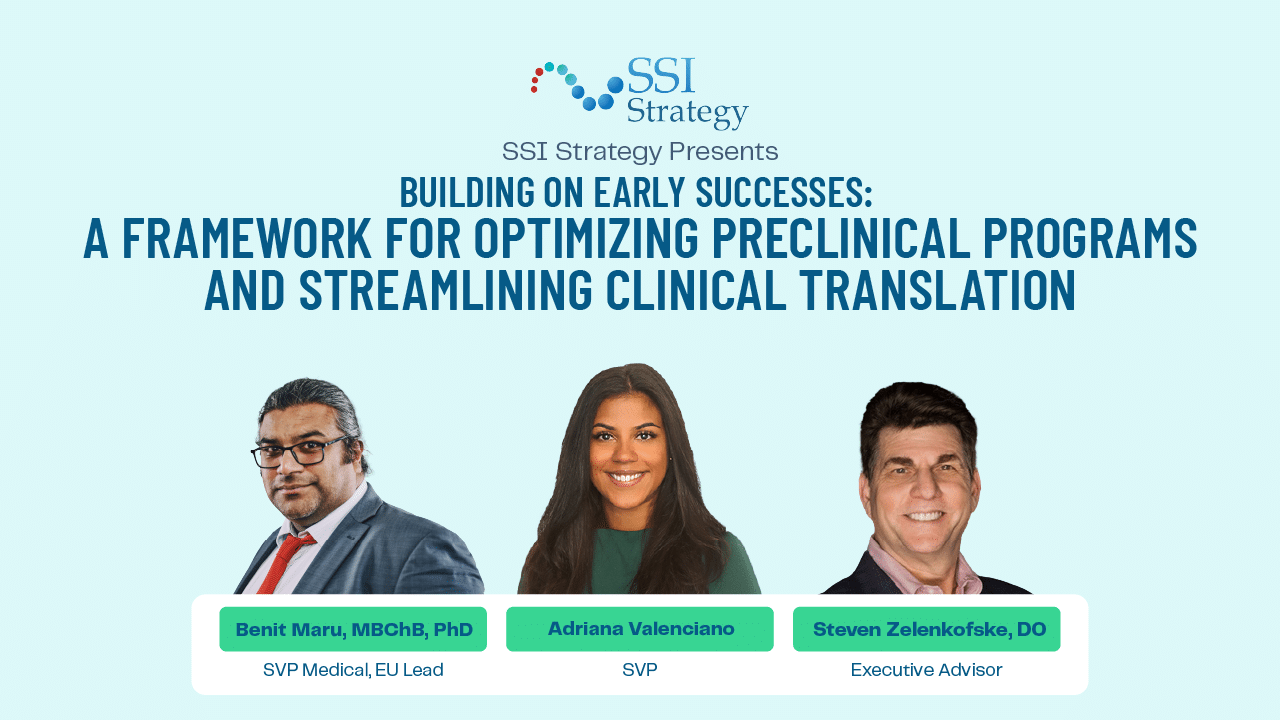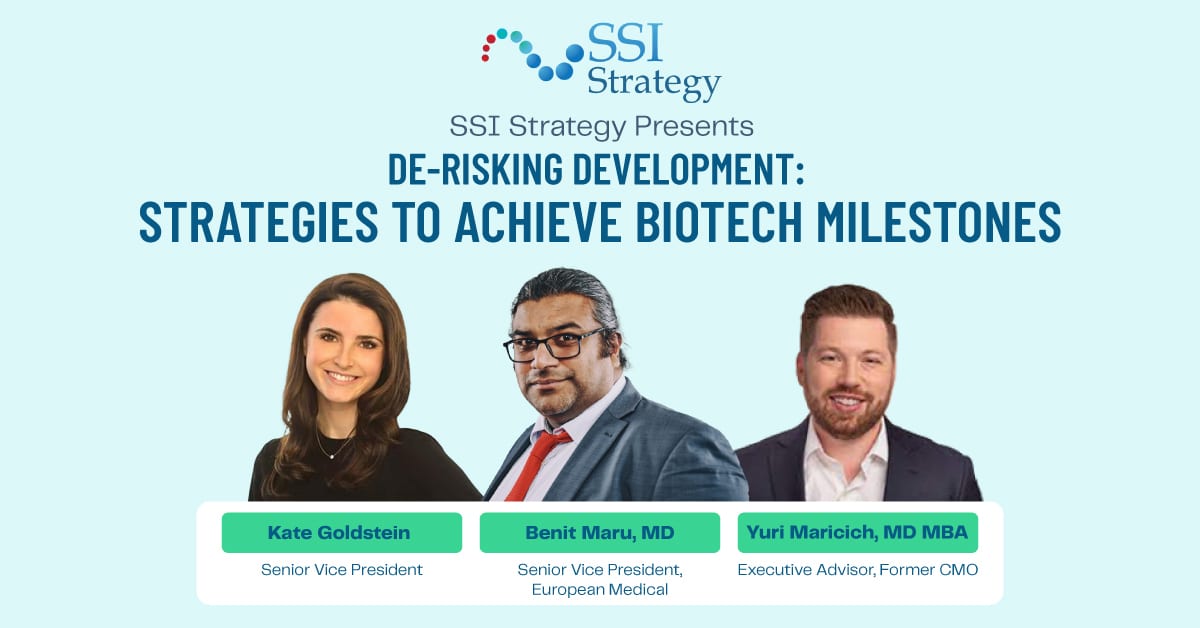Hosted By SSI Strategy & Digital Therapeutics Alliance
“It can be really daunting to young companies if you go out and get a quote for Medical Affairs work, or if you think about the people that you’re gonna have to hire. And you look at the 200 things in a launch playbook or something that you have to do—the cost is in the millions. But you can start with a publication strategy when you know your endpoints, you can plan a lot of this ahead of time and really do that In a more scrappy manner with fewer resources, especially if you choose your resources wisely.” Andy Molnar, CEO of Digital Therapeutics Alliance
DESCRIPTION:
Did you enjoy our webinar on Medical Affairs, Engagement for Digital Interventions? Or are you just coming across this content for the first time?
Conventional wisdom would often have it that hindsight is 20-20. With that in mind, imagine having five respected and experienced biotech leaders share their hindsight and recommendations on Medical Affairs to help you learn and take action as you start or continue your biotech journey. That’s the essence of this webinar and recap.
What Medical Affairs Look Like By Stage
Most of our panelists are at varying stages in their biotech. To help provide a glimpse of what Medical Affairs looks like across early orgs vs. mature orgs, Rachel’s first question addressed the current role and activities of Medical Affairs.
When Did You Start Medical Affairs
Unanimously, each panelist shared that their Medical Affairs work started on Day 0–whether they knew they were doing Medical Affairs or not at that time.
On What Biotechs Can Learn From Pear
Those who pave the way often blaze a trail. Such was the case with Pear, who, despite early momentum in the space, recently had to file for bankruptcy. On the heels of this news, Rachel shared that the Pear team cited payers as one of the major challenges that they faced, which prompted her next question for the group. “How are you approaching things differently or or taking the lessons learned there?”
How To Educate On Digital and Mitigate Risk
Moving the conversation forward, Rachel then shifted to the topic of additional education and the work that has to be done for payers around digital therapeutics. KOLs need education, too. “The education and the messaging is specific to ‘what is digital, what questions should they be asking?’ And then to also think a bit from a risk mitigation strategy for the scientific messaging. What are some risk mitigation strategies and how do you meet that educational need on all those fronts kind of proactively?”
Advice On Results from Medical Affairs and Level Setting Moving Forward
As you can tell from their answers, each panelist was honest, transparent, and encouraging. The same goes for their answers on the upfront investment of time, energy, and capital that Medical Affairs requires but is well worth it for the long-term.
Rachel wanted advice for those about to dive in.
Round-robin style, here’s what each panelist said.
Sharief: You don’t need an FTE, have flexibility, and swap out resources.
Everett: As you scale commercially, your Medical Affairs team will be one of your core value drivers! And it’s also a key source of market insights about what matters most to physicians.
Andy: Always have an ask.
Owen: One very important bridge is between Medical Affairs and Product Development, particularly regarding patient needs.
John: Set appropriate expectations for Medical Affairs and deliver on those expectations. They can’t be unattainable, so lay out a timeline.


